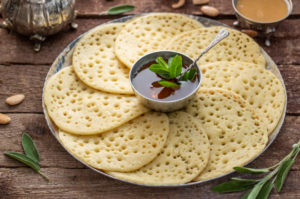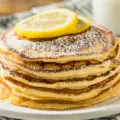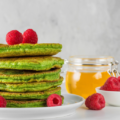Are you looking to add some international flair to your breakfast routine? Look no further than baghrir, the light and spongy Moroccan pancakes made with semolina flour. These pancakes are a delightful twist on the traditional pancake recipe, with a unique texture and flavor that will transport you to the vibrant streets of Morocco.
The Origins of Baghrir
Baghrir, also known as Moroccan pancakes or thousand-hole pancakes, is a beloved dish in Moroccan cuisine. It has a rich history and is often enjoyed for breakfast, as a snack, dessert, or even during the iftar meal in Ramadan. The name “baghrir” translates to “pancake” in Moroccan Arabic, and it perfectly describes the unique texture of these pancakes.
The Unique Characteristics of Baghrir
What sets baghrir apart from other pancakes is its honeycomb appearance. When cooked correctly, baghrir is covered with tiny holes on the surface, giving it a porous and spongy texture. These holes are perfect for soaking up melted honey and butter, making every bite a sweet and indulgent experience.
Unlike traditional pancakes, baghrir is cooked on just one side. This saves time in the kitchen and allows the pancakes to develop their signature texture. The use of semolina flour gives baghrir a subtle nutty flavor and a beautiful golden color.
The Ingredients You’ll Need
To make authentic baghrir at home, you’ll need the following ingredients:
- 1 1/2 cups of fine semolina flour
- 1/2 cup of all-purpose flour
- 2 cups of warm water
- 1 teaspoon of active dry yeast
- 2 teaspoons of baking powder
- 1/2 teaspoon of salt
- 2 teaspoons of white granulated sugar
- Butter for frying the pancakes
Optional toppings:
- Butter
- Honey
The Recipe: Step by Step
Now that you have gathered all the ingredients, let’s dive into the step-by-step process of making baghrir:
Step 1: Prepare the Batter
In a blender, combine the fine semolina flour, all-purpose flour, warm water, active dry yeast, baking powder, salt, and white granulated sugar. Blend for about a minute or until a smooth batter forms and all the ingredients are evenly combined.
Step 2: Let the Batter Rise
Transfer the batter to a mixing bowl and cover it with a clean kitchen towel. Let the batter rise on the countertop for at least 30 minutes. This allows the yeast to activate and create air bubbles, giving the pancakes their signature texture.
Step 3: Cook the Pancakes
Warm a skillet over medium-low heat and melt a small dab of butter in the center. Ladle in about a quarter cup of batter into the center of the skillet, tilting the pan to help the batter spread evenly.
Unlike traditional pancakes, you don’t need to flip baghrir. Cook the pancakes on one side until you can easily get your spatula under them and see dozens of holes appear on the surface. This usually takes a couple of minutes.
Step 4: Serve and Enjoy
Transfer the cooked pancakes to a clean kitchen towel-lined plate and cover them to keep them warm while you cook the remaining pancakes. To prevent sticking, place pieces of the towel between the pancakes.
Once all the pancakes are cooked, it’s time to serve and enjoy. Top the baghrir with butter and honey for a traditional Moroccan experience, or get creative with your favorite toppings like date syrup, maple syrup, or Nutella.
Tips and Variations
- If the batter feels too thick after rising, you can add a splash or two of water to loosen it up. The batter should be thicker than French crepes but thinner than American pancakes.
- Experiment with different toppings to suit your taste. Baghrir pairs well with sweet toppings like honey, date syrup, or maple syrup. For a savory twist, you can try spreading some cream cheese or labneh on top.
- If you have leftovers, baghrir can be frozen. Simply wrap them in plastic and microwave them in 30-second increments until warm.




